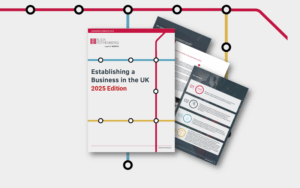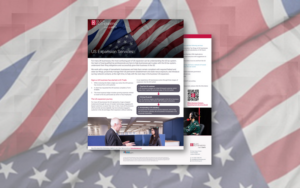Spotlight on…Change of basis for partnerships, LLPs and sole traders
Mark Eade looks at the change in basis for partnerships, LLPs and sole traders, together with highlighting various practical considerations
Mark Eade looks at the change in basis for partnerships, LLPs and sole traders, and provides an overview of the rules, together with highlighting various practical considerations.
Why is it relevant?
For some time now partnerships, LLPs and sole traders have worked through challenges associated with the current basis period rules and interaction with overlap profits. In summary, the effect of the historic rules is that the same profits can be taxed more than once in certain scenarios (for example, in opening years, when an accounting period changes, or when a partner joins a partnership). This results in overlap profits, which can then be relieved when a partner leaves a partnership, or the business is wound up at a point in the future.
HMRC and the UK Government introduced legislation in Finance Bill 2022 that came into effect as of 6 April 2023, and aligns the reporting periods for those unincorporated businesses to tax years. An important point to note for businesses with non-March year-ends, is that they will likely pay more tax in the transitional period than they may expect. Care is therefore needed to ensure the impact on cash flow is understood and planned for.
Who does it affect?
The new rules will impact partnerships, LLPs and sole traders, with effect from 6 April 2023, where the basis period moves from a current year basis to a tax year basis. While HMRC expect some of the affected businesses to change their accounting date to 31 March to avoid further issues, many may not be able to, or wish to do so for a variety of reasons, including:
- Having different reporting requirements for the wider group or
- Private Equity / Venture Capital / Asset Managers who have their year-end aligned with their funds’ year-end
For businesses that do not have a March year-end, they will be required to apportion the profit from relevant accounting periods to the tax year. Conversely, those businesses that do change their year-end to March may find that they must report internally to a different year-end to satisfy group reporting requirements.
This may lead to practical issues for businesses, in particular understanding the cash flow impact on tax payments, especially in the transitional period, and around the availability of information to file tax returns.
What do you need to know?
We explore the current rules and the revised rules in more detail below:
Current rules: Current year basis
In the fiscal year from 6 April 2022 to 5 April 2023, unincorporated businesses will continue to be taxed on their trading profits for the accounting year ending in the tax year in the usual way.
Transitional year: 6 April 2023 to 5 April 2024
In the tax year from 6 April 2023 to 5 April 2024, unincorporated businesses will continue to be taxed on profits arising on the current year basis, provided they have an accounting year end that is 31 March or 5 April.
For unincorporated businesses that have a different year-end, they will be subject to tax on profits to their accounting year-end plus any additional months to 5 April 2024, with a deduction available for any unrelieved overlap profits.
The key point here is that tax payments for the transitional period will be due by reference to the profits for this period, which for non-March year-ends will includes additional months as a result of moving to a tax year basis. It will therefore be important for businesses to understand the impact and model any cash flow requirements from a tax perspective.
Revised rules: Tax year basis from 6 April 2024
The tax year basis period means that businesses will, with effect from 6 April 2024, be reporting their trading activities for the fiscal year from 6 April to 5 April, irrespective of their period of account. Where figures are not available for the accounts made up to the 2025 calendar year, it will be necessary to file based on provisional figures and then revise the return later once the true figures for the later accounting periods are available. This is likely to give rise to practical issues with timing of submissions/resubmissions, and potentially increased administrative costs.
What are the implications?
To illustrate the broad impact on timing, let’s look at two partnerships with non-March year-ends:
30 April year-end:
Partnerships with a 30 April year-end will have nine months to prepare their tax return for the period to 5 April (that ends in that period), which will be due 31 January the following year. Previously, partnerships with a 30 April year-end would have 21 months to prepare and file their tax return, including the allocation of tax-adjusted profits amongst the partners.
31 December year-end:
A partnership with a 31 December year-end will broadly be required to turn around a tax return within a month. For the tax year ended 5 April 2025, the partnership will need to use the figures from both years ended 31 December 2024 and 31 December 2025, and the tax return will be due for filing by 31 January 2026. While it is possible to use figures that represent a ‘best estimate’ for the year ended 31 December 2025, the inconvenience here is that the partnership will need to re-file the tax return once the estimated figures for the year ended 31 December 2025 are finalised.
As above, there can also be important considerations around the timing and quantum of tax payments given the move to a tax year basis.
What should you do next?
As a consequence of the reform, it will be important for businesses to assess the impact, plan in advance, and consider the following issues:
- Tax budgeting for financial periods
- Modelling the impact of the change in basis over transitional and coming years
- Ensuring partners understand the impact
- Consider change of the financial year-end
Contact mark

You may also be interested in

Unlocking Growth: What the Government’s 2025 Industrial Strategy Means for the UK’s Creative Sector

A ray of hope for the Property Market: HMRC transaction data suggests recovery momentum













